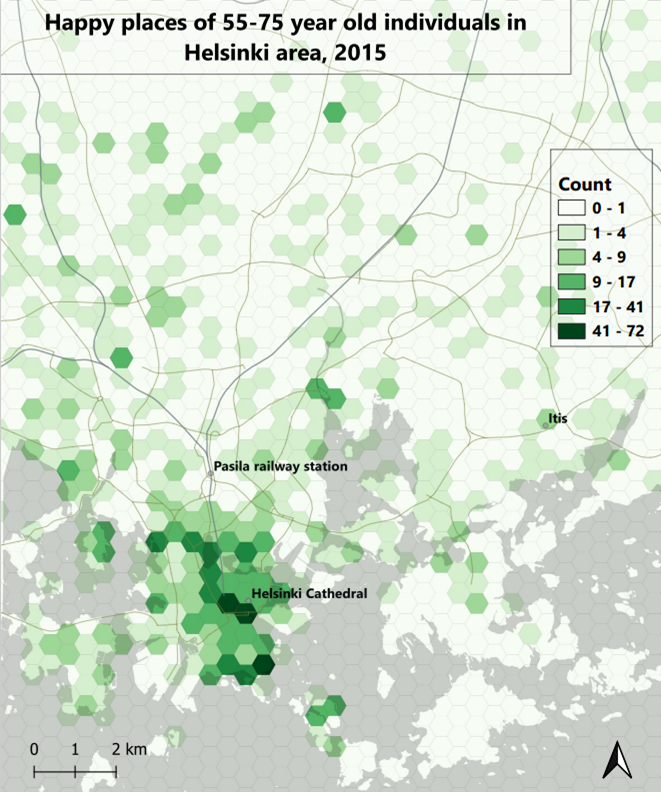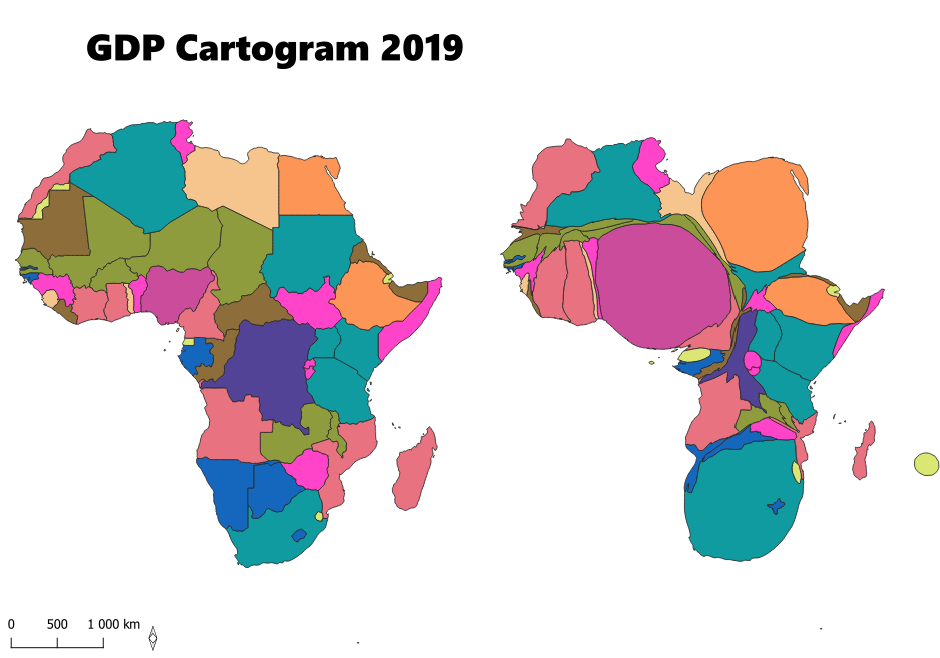Weekly Exercise Reflections Summary
Week 1: In the first week, I projected the data using EPSG:3067, suitable for a small area of Helsinki. I aimed for dark, mysterious, yet informative colors that would not blend together or strain the eyes. The map’s layout had the title at the bottom and the legend at the top, allowing quick comprehension without needing the title. It lacked a north arrow and scale, but the map effectively communicated its purpose. Roads were narrow, emphasizing the buildings with bright colors against a dark background, tying together the map’s overall aesthetic.

Week 2: The second week’s map depicted happy places for 55-75 year olds in Helsinki, aiming for a peaceful atmosphere. I utilized a hexagon grid with 500 m wide cells to represent spatial distribution. Green shades dominated the map for simplicity and harmony, with light gray for the sea and subdued colors for roads and railways to maintain focus on the data points. The title was positioned at the top left, the legend on the right, and both had transparent backgrounds to ensure the grid cells remained visible. North arrow and scale were included at the bottom for orientation without drawing attention away from the main content.

Week 3: In week three, I explored the complementary nature of maps and text in representing information. Maps can convey complex information visually and non-linearly, unlike text, which is read sequentially. Representing time on maps can be either continuous or discrete, linear or cyclic, and ordered or branching, offering various ways to visualize temporal data. Simplification and emphasis are key in map-making, highlighting significant elements while omitting unnecessary details.

Week 4: In the final week, I reflected on the limitations of maps for spatial data representation. Non-cartographic visualizations can sometimes be simpler and more informative. Ensuring high-quality visualizations is vital, with DPI being a critical factor for image clarity. The choice of fonts impacts the map’s readability, with serif fonts preferred for print and sans-serif for digital displays. The balance between detail and simplicity remains essential for effective communication through maps.
https://aadlerii.github.io/Ida-Adler-repository-4/
Week 4 map
Final visualization
